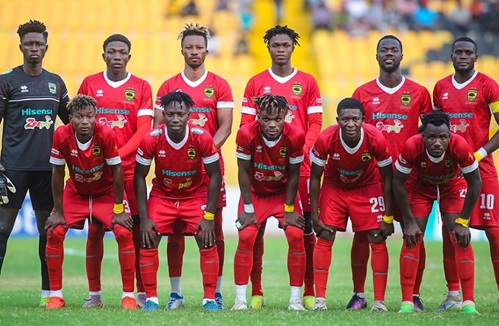People living in flood-prone communities in the Greater Accra Region will have the benefit of advance notice of flooding to enable them to take steps to protect their lives and properties.
The design of the flood early warning system has been completed and processes for the engagement of a service provider will be finalised for deployment to be effected before the major rainy season sets in.
The Minister of Works and Housing, Francis Asenso-Boakye, made this known at a press briefing in Accra yesterday, ahead of the incoming rainy season.
The event was on the theme: “Assessing our preparedness against floods ahead of the rainy season.”
He indicated that the deployment of the system was part of the government’s comprehensive programme to tackle flooding in vulnerable communities under the Greater Accra Resilient and Integrated Development (GARID) project.
Being undertaken in collaboration with the World Bank, the $200-million GARID project had seen the government make significant progress in the implementation of projects meant to mitigate flood risk and address solid waste management challenges in the Greater Accra Region, he said.
Per the workings of the early warning system, an installed radar will receive information on incoming rains from the Ghana Meteorological Authority and it will be able to predict where there will be flooding.
There will be a centre where information will be coordinated and disseminated through traditional and social media to communities at risk of floods.
The National Disaster Management Organisation (NADMO) will also be fed with the data.
Taking a look at other measures to mitigate flooding in the Greater Accra Region, especially the national
capital, during the upcoming rainy season, Mr Asenso-Boakye said the ministry was tackling emergencies, including sustained de-silting of drains.
He said already, de-silting works had been undertaken at hot spots such as Kasoa Millennium City, Adenta Sakora, Nsakyi, Dawhenya, Dome Railway Crossing, New Legon, Santor, Adenta, Sango and Naapladjor.
“In addition, we have deployed all resources available to us to construct new drains and improve existing ones, with a focus on vulnerable communities, ahead of the rainy season.
While progress has been made, we recognise the need to improve drainage infrastructure in many other communities, and that is the subject of ongoing engagements with the Ministry of Finance,” he said.
He said the GARID project was also undertaking participatory community upgrade which would, among others, include the provision of drains to address localised flooding in communities.
That component, he said, would benefit Alogboshie and Akweteyman in Accra.
“Other important interventions include the construction of retention ponds at the Ghana Atomic Energy Commission area to hold large volumes of water which would have otherwise flowed towards the city centre to cause flooding. Our technical team is working with the consultant to finalise that design,” he added.
Mr Asenso-Boakye said projects, such as performance-based dredging of the Odaw River and drainage improvement works at Achimota, Nima and Kaneshie, were about to commence following the completion of all the needed procurement processes.
Notwithstanding the gains made in flood control, he said, human activities undermined the impact of government’s investment to mitigate flood risks and cautioned against inappropriate ways of disposing of solid waste in drainage channels as the country braced itself for the onset of the rainy season.
“We need the citizenry to support the government’s efforts by respecting rules and regulations governing settlement planning and avoid development on water courses and drainage buffers,” the minister added.
He said the safety of communities, especially those in flood-prone areas, should be a shared responsibility.
Mr Asenso-Boakye disclosed that some 785 buildings sited on water courses had been earmarked for demolition in the La Dade-Kotopon municipality as part of efforts by the government to address the menace of flooding in Accra.
The demolition exercise, which will be undertaken by the assembly, would be in response to directives by President Nana Addo Dankwa Akufo-Addo to all assemblies to ensure that buildings that impeded the free flow of storm water in drainage channels were cleared, he said.
He said the La-Dade-Kotopon Assembly was currently working on the necessary logistics to undertake the assignment.
The minister said while the government was determined to build resilient communities that could withstand and reduce the incidence of flooding especially in Accra, certain human activities had hugely contributed to thwart investments in the provision of drainage infrastructure.
He said the activities of developers in areas such as Tseaddo, Kpeshie Reserves, Railway Reserve Line at Roman Ridge, Villagio site, Amanfro and Teshie Bush Road in the Ledzokuku municipality had led to the destruction of buffers meant to hold storm water.
Other human activities, he revealed, had also reduced the flow of some rivers, leading to flooding in communities upstream.
He said his ministry had engaged the support of the Ministry of National Security for the assemblies to enforce planning laws and building regulations as a way of halting the haphazard development on wetlands and other water bodies across the country.
SOURCE: Graphiconline








